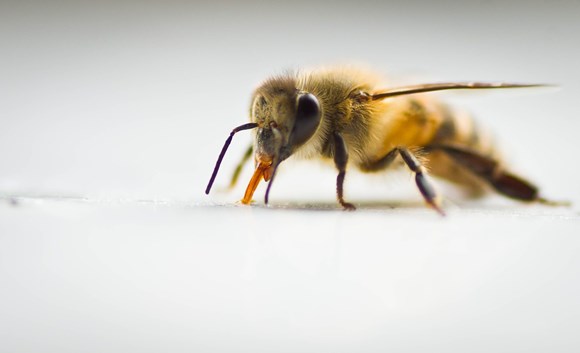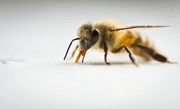
29 Jun 2017
Newcastle University Retracts Claim that Neonicotinoid Ban Cost UK Farmers £18.4 million

A study produced in March 2016 by Rural Business Research and the Institute of Agri‐Food Research and Innovation at Newcastle University was widely reported in the media as showing that the neonicotinoid ban on flowering crops had cost UK farmers £18.4 million in increased pest control expenditure.
The claim was made in the press release and was not made in the text of the full report.
The claim was challenged by Buglife and Friends of the Earth and report author Paul Bilsborrow agreed that without a comparison with costs before the ban it was impossible to claim that the costs of Cabbage stem flea beetle control on Oilseed rape in 2016 represented an increase in costs.
This culminated yesterday in the retraction of the claim that “The full cost to farmers of the neonicotinoid ban in 2016 was £18.4 million” and its replacement with the statement that “The full cost to farmers of CSFB in 2016 was £18.4 million”.
Although farmers were losing neonic treated Oilseed rape crops before the ban, no records were kept, so it is impossible to assess any change. However, it is possible to compare the costs of purchasing and applying Cabbage stem flea beetle related insecticides. In 2012 farmers spent about £8.2 million and in 2016 they spent about £12.8 million. However, any increase in insecticide costs is more than compensated for by the increase in yield. From 2012 to 2014 UK Winter oilseed rape yielded on average 3.33 tonnes/Ha, but after the ban the yield increased and has averaged 3.50 t/Ha. A 0.16t/Ha increase in yield on the UK Oilseed rape hectarage is worth £28 million, dwarfing any change in production costs.
A recent scientific paper has linked declining Turnip oilseed rape yields in Finland with the decline in wild pollinators caused by neonicotinoids. If bees and predatory beetles recover from neonicotinoid use, then yields may increase further.
It should be noted that there is no scientific paper establishing any link between increases or decreases in Cabbage stem flea beetles and the use, or the banning of, neonicotinoids. The flea beetle population in Eastern England actually started increase in the year before the ban and has now declined. In Germany insecticide use on Oilseed rape has reduced since the ban.
“The authors have been big enough to admit and correct the error in their press release, and we hope that journalists and editors will do their part to set the record straight; the future of bees and agriculture is too important to be guided by convenient untruths”. Said Matt Shardlow, Buglife CEO.
Contact Information
Paul Hetherington
Director of Fundraising and Communications
Buglife
07732158128
paul.hetherington@buglife.org.uk
Notes to editors
Notes for Editors
More breaking news on neonics - UK Government urged to re-examine support for bee killing pesticides
Two new scientific studies published today in the top ranking Science journal throw further light on the profound damage that neonicotinoid insecticides are doing to wildlife and beneficial insects. Buglife is calling on Defra Secretary of State Michael Gove to consider the new evidence of harm and undertake a review of the Government’s opposition to measures to protect bees from pesticides.
What emerges from the two studies is a picture of a global agricultural landscape heavily contaminated with persistent toxins that are destroying populations of wild bees and harming captive honeybee health.
The CEH Study (Woodcock et al. 2017) was brokered by Defra and funded by Bayer and Syngenta, and has been touted by many as the study that will provide conclusive evidence about the role of neonicotinoids in bee decline. It is the first properly replicated winter sown Oilseed rape field study, with 33 sites examined in the UK, Germany and Hungary. However, the study was seriously limited by the single exposure source examined – pollen and nectar from the Oilseed rape. In real life bees are also exposed to high concentrations of neonicotinoids in widely dispersing dust produced during the planting of treated seeds and the ploughing of land, and through pollen and nectar in wildflowers near arable fields; which can contain higher levels of neonicotinoids than in the crop flowers.
Despite the CEH Study only looking at one narrow source of bee poisoning the authors still found that honeybees and wild bees were all significantly impacted, with big reductions in honeybee colony size and reduced reproduction rates in wild bees.
The second paper, a Canadian study on neonicotinoid treated maize (Tsvetkov et al. 2017), found that neonicotinoids killed honeybee workers, reduced bee hygiene activity and resulted in queenless hives. The bees were not getting poisoned primarily by crop pollen and nectar however, the main route of acute exposure was neonicotinoid contaminated dust and the biggest exposure throughout the year was from neonicotinoids in wild flowers.
The Canadian study also found that the common fungicide boscalid almost doubled the toxicity of neonicotinoids to bees. This is significant because a recent paper showed that 70% of the plants that people buy from garden centres to help garden bees contain neonicotinoids, and 48% also contain boscalid (Lentola et al. 2017). This suggests that gardeners may be unknowingly poisoning pollinators in their efforts to try to help them, a factor that may be associated with recent declines in numbers of urban butterflies (Dennis et al. 2017).
“The horror story is clear, we have contaminated our land and water with persistent neonicotinoid pesticides, already 40% of UK wild bees have been effectively exterminated across large parts of their range. We are calling on Michael Gove to review the Government’s position and to get fully behind international efforts to secure a global ban on the use of these toxins; let’s get them out of our meadows, streams and gardens and give our bees, butterflies and birds a chance to recover.” Said Matt Shardlow, Buglife CEO.
Corrected Press release - http://www.ncl.ac.uk/iafri/news/item/furtherinvestigationintotheimpactofthebanonneonicotinoidseeddressings.html
Full report:-
Charles Scott & Paul Bilsborrow (March 2017) A further investigation into the impact of the ban on neonicotinoid seed dressings on oilseed rape production in England, 2015-16. Rural Business Research and the Institute of Agri‐Food Research and Innovation at Newcastle University
Hokkanen, H., Menzler-Hokkanen, I. and Keva, M. (2017) Long-term yield trends of insect-pollinated crops vary regionally and are linked to neonicotinoid use, landscape complexity, and availability of pollinators. Arthropod-Plant Interactions 11:449–461
https://link.springer.com/content/pdf/10.1007%2Fs11829-017-9527-3.pdf
Buglife-The Invertebrate Conservation Trust is the only charity in Europe devoted to the conservation of all invertebrates, and is actively working to save Britain's rarest bugs, bees, butterflies, ants, worms, beetles and many more fascinating invertebrates. Further information is available on Buglife’s website at www.buglife.org.uk Follow us on Twitter @buzz_dont_tweet and ‘Like us’ on Facebook: Buglife – The Invertebrate Conservation Trust.

